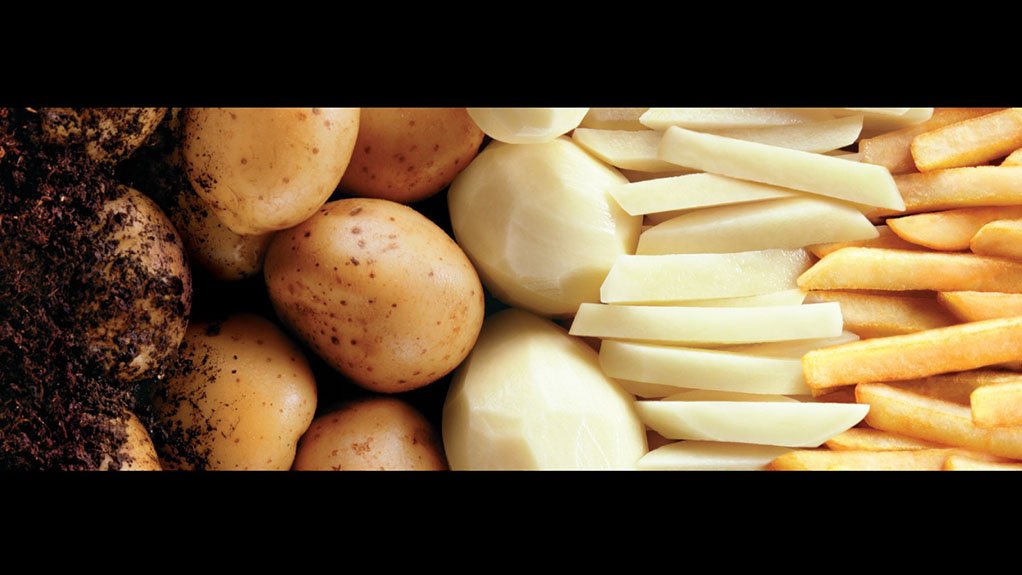South Africa’s food and non-alcoholic beverage (NAB) – hereafter, for short, to be referred to as just food – inflation continued to decelerate in June, the Bureau for Food and Agricultural Policy (BFAP) has highlighted, in its latest “Food Inflation Brief”. But food inflation continued to run far above the level of consumer price index (CPI) headline inflation. In year-on-year (y-o-y) terms, food inflation in June was running at 11%, as against the equivalent CPI headline inflation rate of 5.4%. In month-on-month (m-o-m) terms, food inflation in June was 0.5%, while CPI headline inflation was 0.2%. The contribution of food inflation to y-o-y CPI headline inflation last month was 1.9 percentage points, and its contribution to the m-o-m CPI figure was 0.1 percentage points.
In contrast, the United Nations Food and Agriculture Organisation’s global food price index (which covers cereals, dairy, meat and oils) recorded y-o-y deflation of 20.9% in June. Y-o-y, South African food inflation last month was higher than food inflation in China (2.3%), Brazil (4%), the US (5.7%) and Kenya (10.3%), but lower than that in Zambia (11.2%) and the European Union (13.8%). June was, however, also the third month in a row in which South African food inflation decelerated, suggesting that the country was now, like Brazil, the US and the European Union, in a declining food inflation trend. South Africa’s y-o-y food inflation last month was also slightly below the level last seen in August last year.
In terms of key factors affecting South African agriculture, in June y-o-y CPI inflation for electricity and other fuels rose by 7.9%, but that for fuel fell by 8.3%. Also y-o-y, the rand depreciated by 18% against the US dollar, from R15.81/$1 in June 2022 to R18.71/$1 last month.
The food categories that saw the highest y-o-y inflation in South Africa in June were vegetables (20.9%), sugar-rich foods (16.4%), bread and cereals (15.5%), dairy and eggs (14.1%), NAB (9.6%), fish (9.5%), meat (6.1%), and fruit (1.2%). Oils and fats recorded y-o-y deflation of 9.5%. The highest m-o-m food inflation rates last month were sugar-rich foods (5.4%), dairy and eggs (1.4%), fish (1%), NAB (0.5%), and bread and cereals (0.3%). Meat recorded zero m-o-m inflation, while vegetables saw m-o-m deflation of 0.2%, fruit deflation of 0.4% and oils and fats deflation of 1.9%.
The individual food items that saw y-o-y inflation equal to or above 30% last month were (in the BFAP’s order) onions, potatoes, frozen potato chips, and cauliflower. Those with inflation equal to or above 20%, but less than 30%, were broccoli, sweet potatoes, samp, bacon, fresh whole chicken, chicken giblets, corned beef and pineapples. Those with inflation equal to, or above, 10%, but less than 20%, were baked goods, pasta, wheat flour, maize meal, hot cereals (porridge), fresh chicken portions, ham, beef extract, fish fingers, milk, yoghurt, cheese, sour milk, peanut butter, oranges, apples, papaya, spinach, cabbage, tomatoes, pumpkin, various frozen vegetables, carrots, mushrooms, various canned vegetables, canned baked beans, white sugar, sugar-rich foods, ground coffee or coffee beans, tea, bottled water, fruit juice.
On the other hand, a series of food items recorded y-o-y deflation in June. These were (again in the BFAP’s order) rice, beef rump steak, brisket, chuck, sirloin, stew, offal, pork chops, ribs, mutton/lamb rib chop, loin chop, leg, stew, sunflower oil (including canola oil), avocados and lettuce.
The price of the BFAP’s Thrifty Healthy Food Basket (THFB) increased by 12.5% in June, y-o-y, or by R398. But it declined by 0.9% m-o-m, a price reduction of R32. The THFB is composed of 26 food items drawn from all food groups and is designed to feed a family of two adults and one older and one younger child, for one month. Assuming the family is earning two minimum wages and is benefitting from child grants and school meals, last month buying the THFB would have taken 31.2% of the family’s total income.
For the coming months, there were three main international factors that could affect food prices. These were (again, in the BFAP’s order) Russia’s ending of the Black Sea Grain Initiative (on July 17), which allowed the export of Ukrainian grain from that country’s ports without Russian interference (subsequent Russian missile strikes against Ukraine’s grain exporting infrastructure, including storehouses, in Odesa, were too recent to be referred to in the BFAP report); the possibility of an El Niño event; and the possible weakening of the rand exchange rates.
EMAIL THIS ARTICLE SAVE THIS ARTICLE ARTICLE ENQUIRY
To subscribe email subscriptions@creamermedia.co.za or click here
To advertise email advertising@creamermedia.co.za or click here











